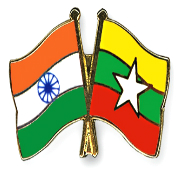India to End Free Movement Regime Permitting Border Crossing Into Myanmar
The Indian government has decided to terminate the Free Movement Regime (FMR) allowing visa-free 16-kilometer entry into each other’s territory for people living along the India-Myanmar border. Advanced fencing will be erected to fully seal the porous frontier.
What is the FMR?
The FMR, in place since 2018, lets tribes inhabiting both sides travel up to 16 km across the border without visas based on annual border passes. It aimed to strengthen cultural ties.
Misuse of FMR Provisions
- Insurgent groups leveraged the relaxed rules to stage attacks and escape arrests by crossing over.
- The porous nature also enabled unchecked immigration, narcotics and gold smuggling.
Previous Demands for Closure
Last September, Manipur’s Chief Minister urged ending the FMR to control unauthorized entry, echoing wider anxieties. The state itself has initiated a citizens’ register exercise to identify lawful residents.
Securing the Frontier
- The 1,600 km India-Myanmar boundary traverses four Indian states. Barely 10 km of non-mountainous segments are currently fenced.
- But the entire stretch will now be sealed over 4.5 years using advanced surveillance systems.
- It expands on recent moves to block unregulated cross-border movement through militancy-hit regions.
- The termination though shrinks community exchange rampant for centuries before geopolitical realities intervened.
Balancing Security and Interests
The government has possibly judged threats outweighing FMR benefits under the facade of cordial bilateral ties. With huge infrastructure planned, rational border management appears the thrust – blocking free access while still pursuing strategic Act East goals.
Month: Current Affairs - January, 2024
Category: International / World Current Affairs








